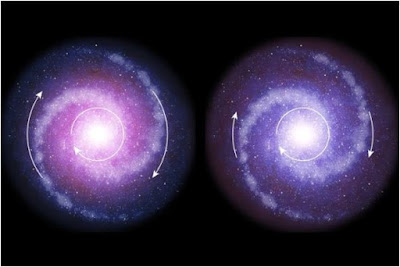 |
| NASA will use CAL to better try to understand a highly misunderstood type of matter in space. Image Credit: NASA |
All Posts (6512)
Dust off those old specfic flashfics and short stories you’ve got lying around.
Spec Fics is now accepting submissions from Guest Authors who would like to showcase their overlooked works on our website. To that end, we are now accepting short works of fiction to be made available for free online reading.
We welcome speculative flash fiction and short stories. All sub-genres that fit under the umbrella of speculative fiction are welcome: scifi, horror, dark fantasy, steampunk—you name it.
For information on how to submit your story, here are the Submission Guidelines:
Submission Guidelines
Email your story as an attachment to tonyamoore@outlook.com.
Your story should be in RTF (Rich Text Format) or DOCX (Word) format. Be sure to include your name and email address in the story document.
Include the following information in the body of your email:
Name:
Short Bio:
Picture (Optional):
Website/Blog Url:
Previously blogged/published stories are welcome.
We do stipulate that your story must be your original work. Sorry, no Fan Fiction.
 |
| Does the brain behave like a spin glass? (Courtesy: Shutterstock / Phonlamai Photo) |
 |
| An aurora viewed from the International Space Station. Credit: NASA |
Check out this short film featuring Conscious Metal Sounds & Wholistic Visuals from a Thrash-Hop Rock Band featuring musicians I played on and off the radio from my DJ Days - GOD BLESS - D-Rock SOUL-Jah!!!
 |
| Image Source |
 |
| Image Source |
Even though this speculation sounds exciting, it makes us wonder if/how/when the lawsuit from Sophia Stewart was ever settled in such a way to spearhead this new chapter. Plus, it makes others ponder if this is a redemption publicity stunt to counter-spin the discrimination lawsuit that African-American employees have against Turner Time Warner right now. Feel free to share thoughts!!! AL Bey
https://www.moviefone.com/2017/03/15/the-matrix-may-be-getting-a-reboot-with-michael-b-jordan
 |
| The NASA Pi Day Challenge is an illustrated math problem set that gets students solving some of the same problems NASA scientists and engineers must solve to explore space. |
Topics: Education, Einstein, Humor, Mathematics, NASA, STEM
| Math Symbol | Pronounce Like |
|---|---|
 |
| Image Source: Science Alert |
Topics: Astrophysics, Photonics, SETI, Solar Sail, Space Exploration
Physics arXiv: Fast Radio Bursts from Extragalactic Light Sails
Manasvi Lingam, Abraham Loeb
#P4TC:
Light Sails Leakage, September 9, 2015
 |
| Researchers have created the world's first time crystal, an exotic state of matter that combines the rigidity of an ordinary crystal with a regular rhythm in time. (Credit: E. Edwards/JQI) |
http://physics4thecool.blogspot.com/2017/03/gluons-and-protons.html
Check out our new web series MESSIAH WARS. It centers around a group of young individuals with spiritual gifts that have to band together to fight the forces of evil. We merge our love of sci fi, fantasy, afro futurism and spirituality in this show!! Check it out and don't forget to subscribe!!
Episode 3
 |
| Image Source: Famous Scientists |





